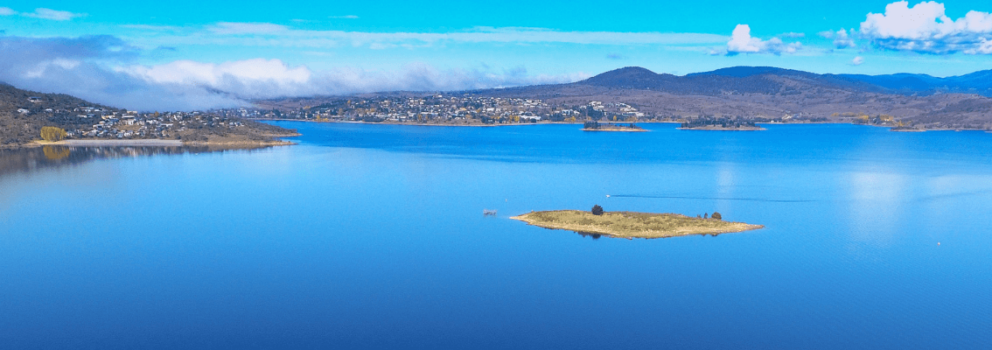The Snowy Mountains are well known for being home to Australia’s best snow sports, it is also outside this peak season that the mountains shake off the snow to expose their real beauty.
Spectacular peaks, clear mountain streams and the clean, crisp high-country air provides an ideal environment to relax and unwind or enjoy unique adventures.
In the warmer months, when the fields of wildflowers bloom, you can enjoy the impressive scenery on a bushwalk along the roof top of Australia or have a true high-country experience on horseback.
Melting snow generates a surge for trout filled streams while the lakes offer great water skiing or the outlook for the perfect picnic. Enjoy activities such as bushwalking, trout fishing, horse riding, mountain biking, water sports, snow skiing, 4WDriving, orienteering, abseiling, rock climbing, photography and snow shoeing.
Jindabyne
The original township of Jindabyne lies at the bottom of Lake Jindabyne, however the town was moved to its present location when the valley was flooded and dammed as part of the Snowy Mountains Scheme. Lake Jindabyne is the second largest reservoir of the Snowy Mountains Scheme after Lake Eucumbene. Fishing is popular both in the lake and nearby streams, while wilderness experiences can be enjoyed both on horseback or mountain bikes. The endless list of water activities including sailing, windsurfing, fishing, white water rafting, canoeing and kayaking are all readily available. Of course, during winter the wonderlands of Thredbo, Perisher and Charlottes Pass, all within a scenic 30 – 40 minute drive, offer fun and adventure for the entire family.
Kosciuszko National Park
Located on our doorstep in the Australian Alps, Kosciuszko National Park is unique to the world’s geographic alpine terrain and is internationally recognised as a UNESCO Biosphere Reserve.
- Almost 690 hectares (1,485,000 acres) across 9 wilderness areas.
- Contains the highest mountains and glacial lakes in Australia.
- Has plant species found nowhere else on earth highlighted by vivid fields of colourful alpine flora.
- Rare and indigenous Australian mountain fauna.
- Source of the Snowy, Murray and Murrumbidgee River.
- More than 200 species of birds have been sighted in the park which represents also 40 percent of the known bird species in NSW. The magnificent wedge-tailed eagles are common sights as are kestrels, emus, cockatoos and magpies.
- Mt Kosciuszko, the highest peak in Australia was named after a famous Polish patriot by early pioneer Count Strzelecki.
- Seventy aboriginal campsites have been discovered in the KNP as well as ceremonial grounds, sacred trees, graces and artefacts.
Kosciuszko National Park – Access
The National Parks charge per car for entry into the National Park area. Prices are:
- Winter peak (Alpine Way, Kosciuszko Rd and Link Road) From start of June long weekend to end of October long weekend: $29 per vehicle per day (24hrs); motorcycles $12; bus passengers $11.45 per adult, $3.60 per child per day (24hrs). Find out more about the Winter entry surcharge.
- Rest of the year (Alpine Way and Kosciuszko Road only) $17 per vehicle per day (24hrs); motorcycles $7; bus passengers $6.60 per adult, $2.20 per child per day (24hrs).
- Yarrangobilly Caves (year-round) $4 per vehicle per day, unless general park entry has been paid.
- Passes: Day passes (based on daily entry fees above), multi-day passes and annual All Parks Pass available from local NPWS visitor centres. Day and multi-day passes available from entry stations when open. Short Breaks Pass: $68 for 5 days park entry at price of 4 days (not valid winter) is available at local NPWS visitor centres and entry stations on Alpine Way and Kosciuszko Rd when open. Find out more about park passes for Kosciuszko National Park.


